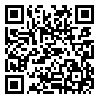Volume 9, Issue 3 (2020)
ORMR 2020, 9(3): 89-110 |
Back to browse issues page
Download citation:
BibTeX | RIS | EndNote | Medlars | ProCite | Reference Manager | RefWorks
Send citation to:



BibTeX | RIS | EndNote | Medlars | ProCite | Reference Manager | RefWorks
Send citation to:
Mohebimanesh O, Hosnavi R, Tavakoli G, Bagheri A. Developing a Conceptual Model for Explaining Alliance Management Capability Role in Increasing Organizational Performance. ORMR 2020; 9 (3) :89-110
URL: http://ormr.modares.ac.ir/article-28-27477-en.html
URL: http://ormr.modares.ac.ir/article-28-27477-en.html
1- Ph.D. Student in industrial Management, Faculty of Management and Soft Technologies, Malek Ashtar University of Technology, Tehran, Iran
2- Professor, Faculty of Management and Soft Technologies. Malek Ashtar University of Technology, Tehran, Iran , hosnavi@mut.ac.ir
3- Associate Prof. Faculty of Management and Soft Technologies, Malek Ashtar University of Technology, Tehran, Iran
4- Assistant Prof. Faculty of Management and Soft Technologies, Malek Ashtar University of Technology, Tehran, Iran
2- Professor, Faculty of Management and Soft Technologies. Malek Ashtar University of Technology, Tehran, Iran , hosnavi@mut.ac.ir
3- Associate Prof. Faculty of Management and Soft Technologies, Malek Ashtar University of Technology, Tehran, Iran
4- Assistant Prof. Faculty of Management and Soft Technologies, Malek Ashtar University of Technology, Tehran, Iran
Abstract: (4267 Views)
The main objective of this study is to provide an appropriate conceptual model for better explanation the relationship between alliance management capability and firm performance with introducing mediator variables focusing on two views of resource-based view and dynamic capability.In this research, in conceptualizingalliance management capability in order to better adapt it to environmental changes, it has been used from the view of dynamic capability and to explain how it affects firm performance, two mediator variables (effective resource sharing and joint development of knowledge and capabilities) are defined focusing on the resource-based view.In order to test the suggested model of research and its related hypotheses, structural equation modeling with partial least squares approach has been used.The results of testing the proposed research model which has been done in 79 strategic alliances in the air defense industriesusing questionnaires, confirm the validity and reliability of the proposed model and all the hypotheses considered. According to the results of this research, a firm in order to be able to continuously absorb and develop its resources and capabilities through inter-organizational alliance, should first institutionalize and integrate the processes and routines associated with the four sub-capabilities reflecting the alliance management capability (alliance proactiveness, alliance coordination, alliance learning, and alliance transformation) and by using the generated capability, establish a widespread and continuous collaborations with its partners on the effective sharing of complementary resources and joint development of new and exclusive knowledge and capabilities. Also, the measurement scales and indicators provided in this study can be a good reference for managers to develop this capability in their organizations.
Article Type: Original Research |
Subject:
Strategy and Management
Received: 2018/11/23 | Accepted: 2020/02/9 | Published: 2020/02/9
Received: 2018/11/23 | Accepted: 2020/02/9 | Published: 2020/02/9
Send email to the article author
| Rights and permissions | |
 |
This work is licensed under a Creative Commons Attribution-NonCommercial 4.0 International License. |







